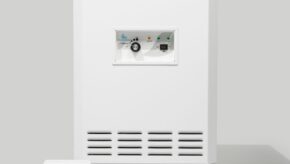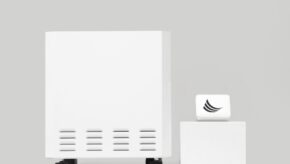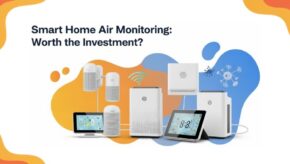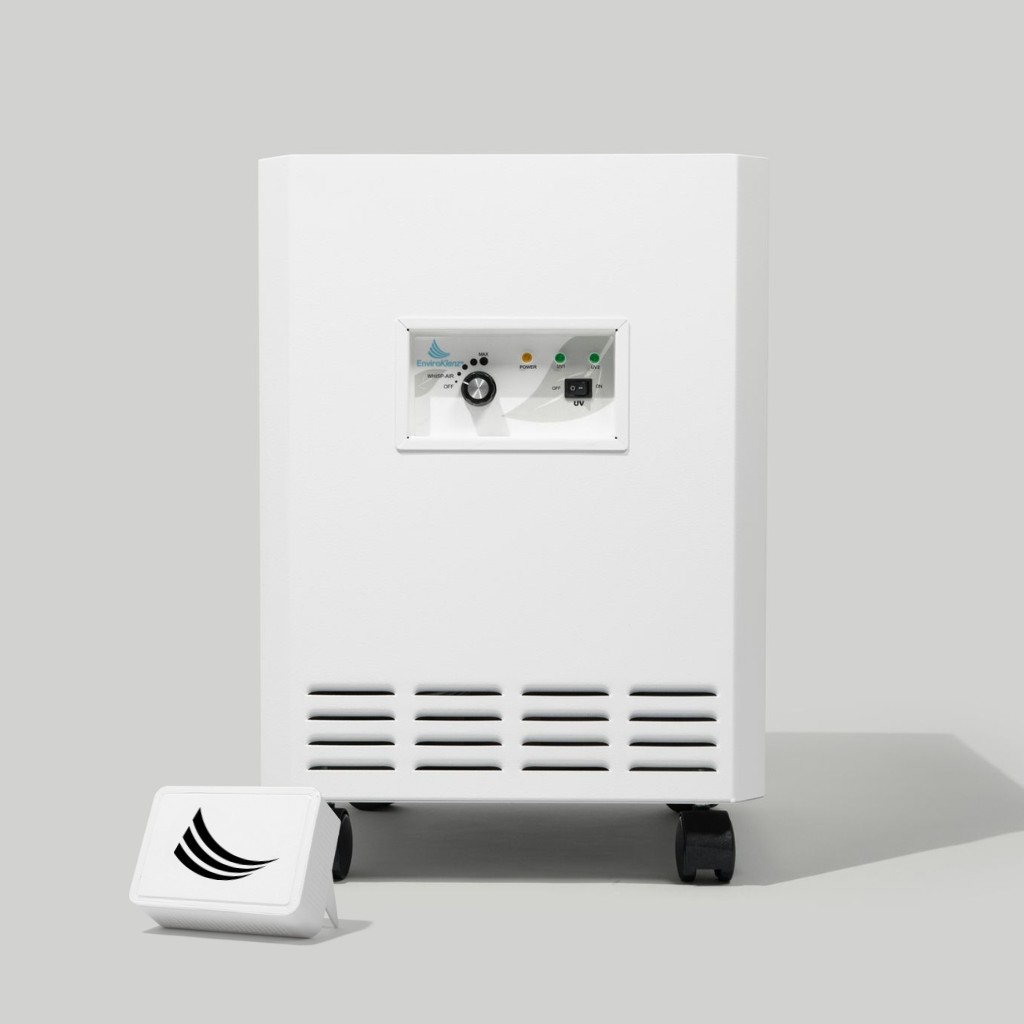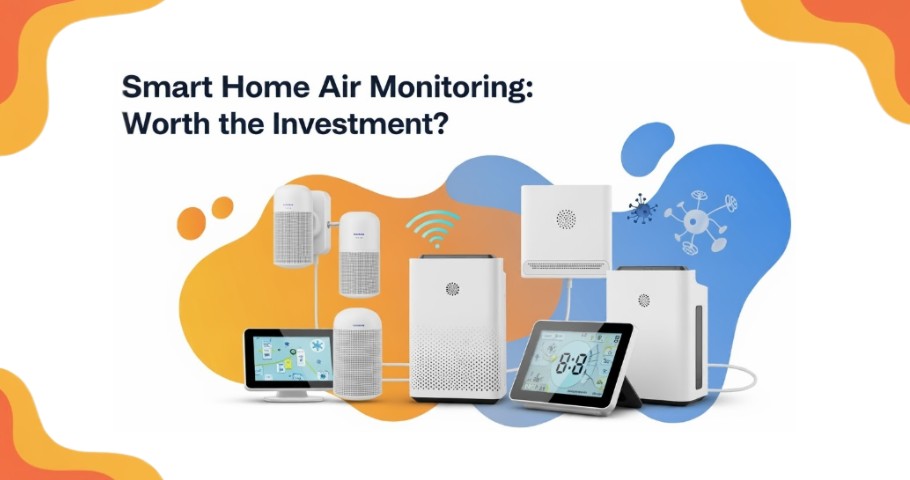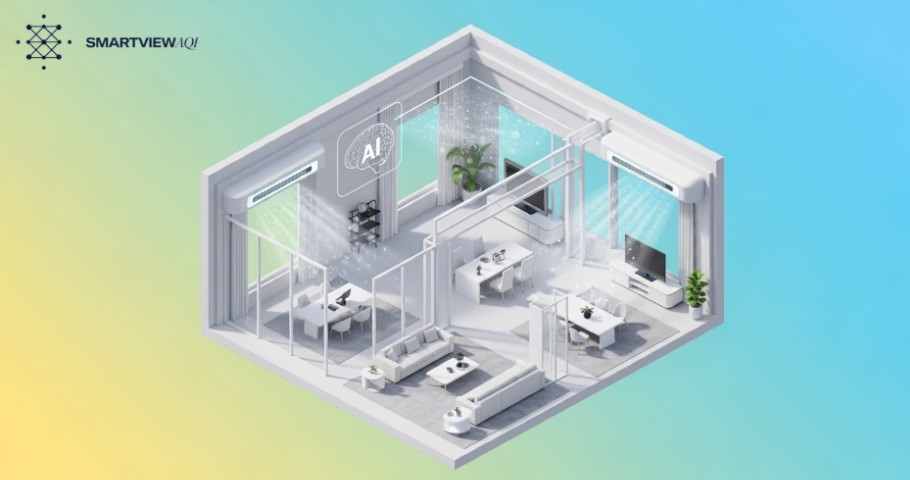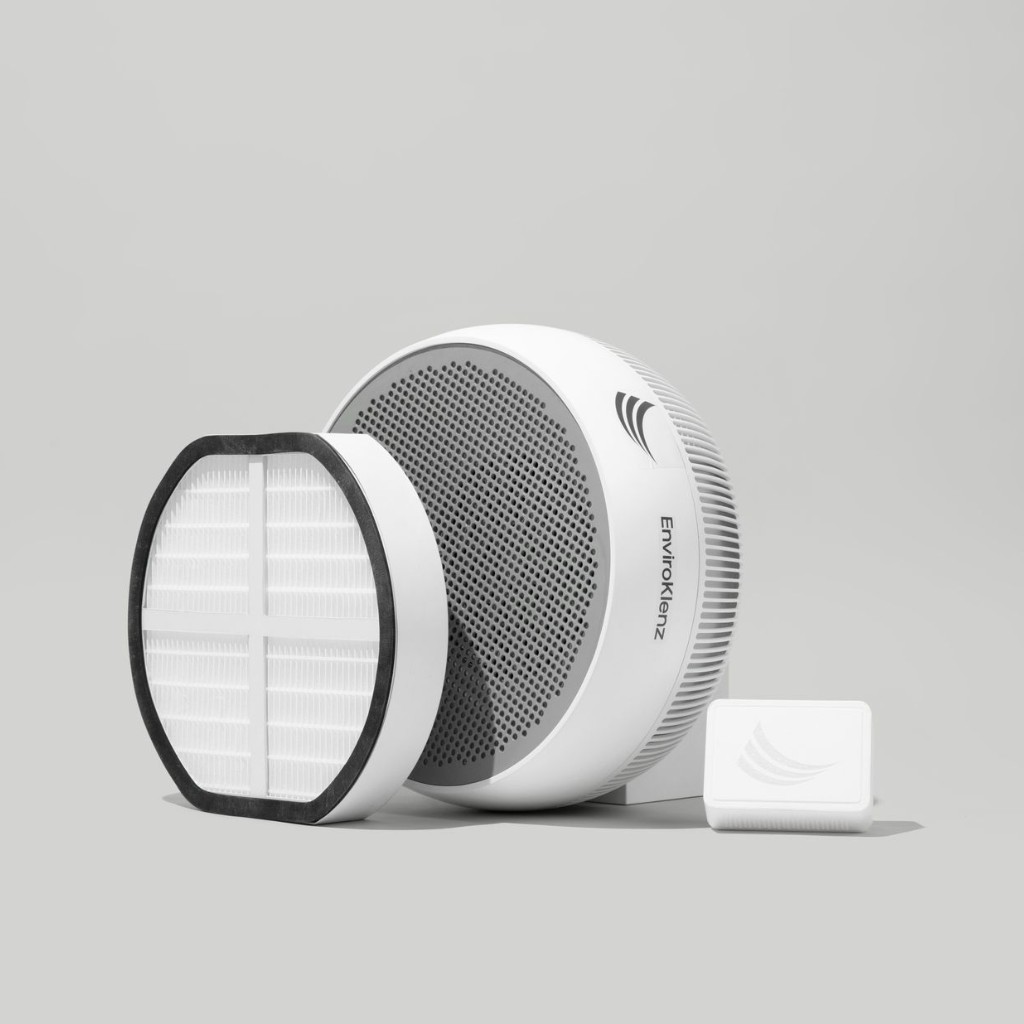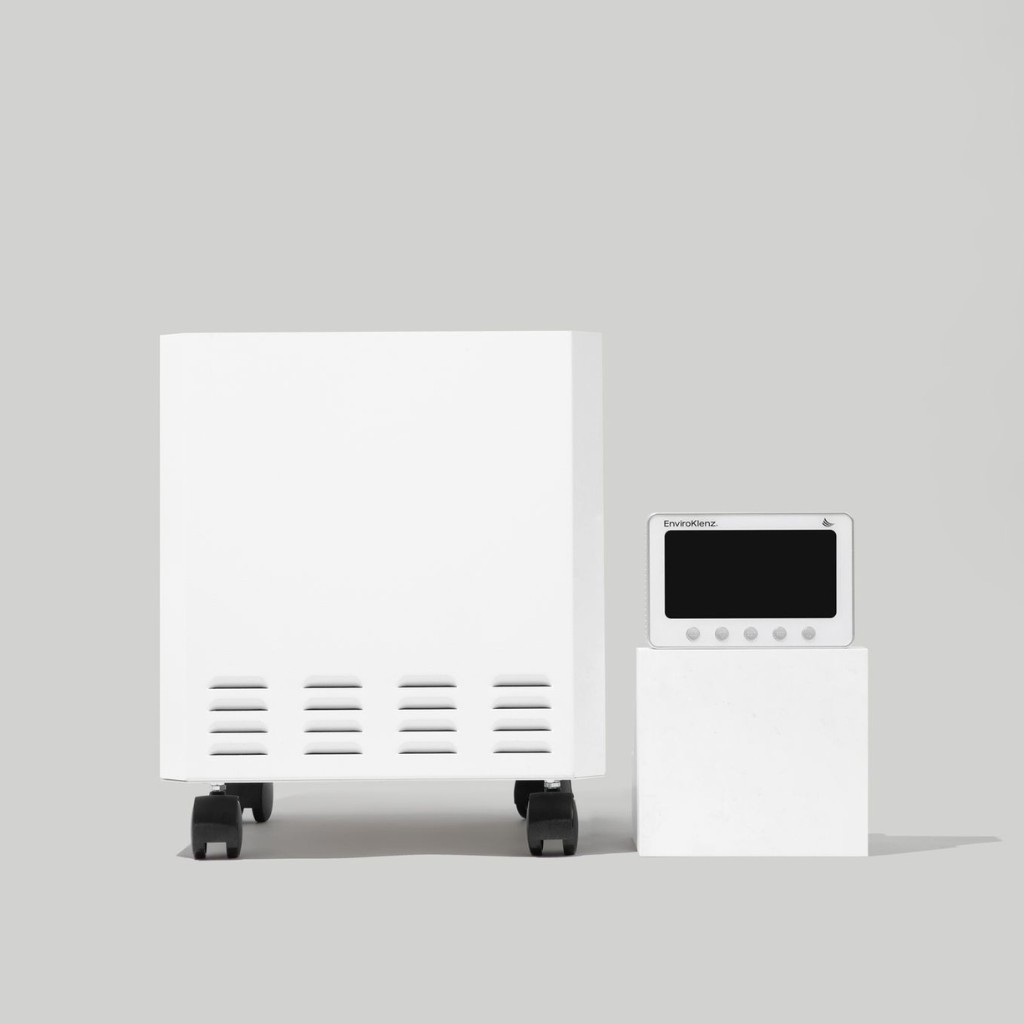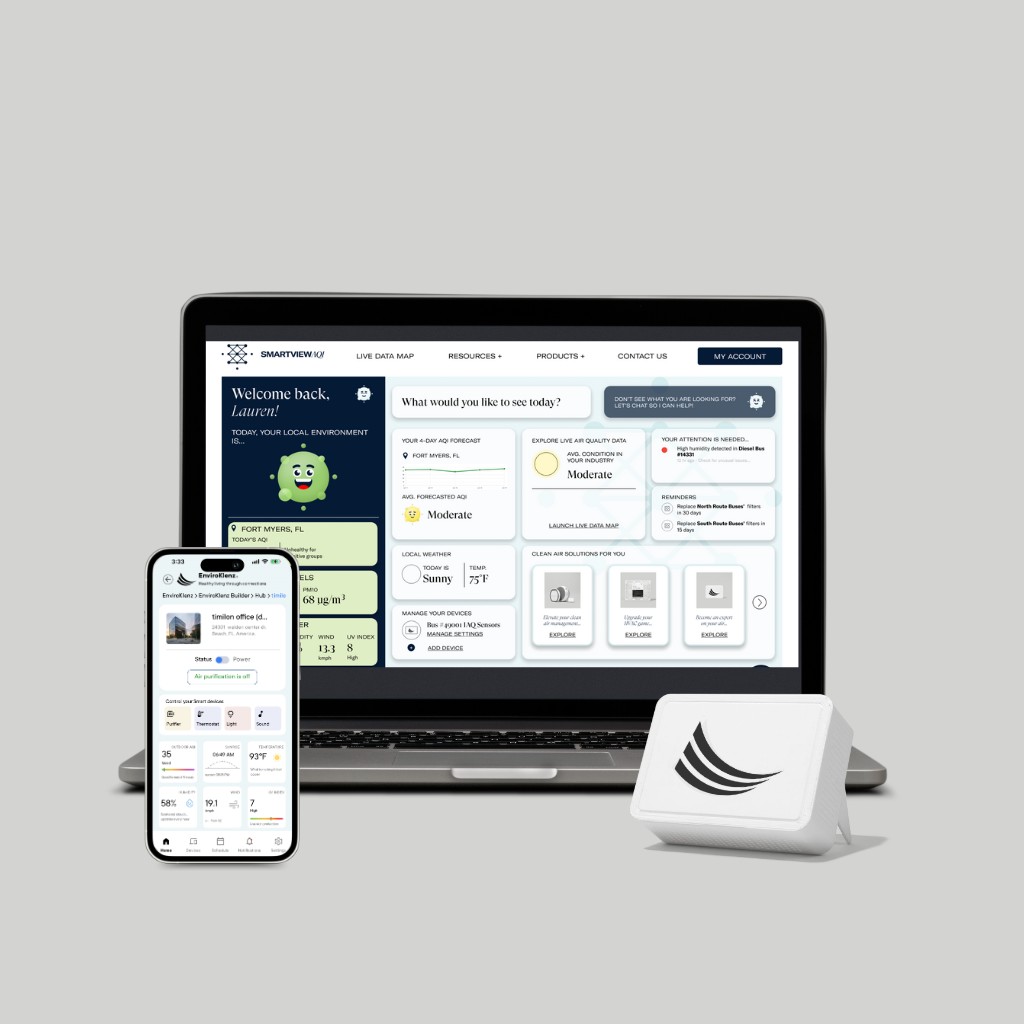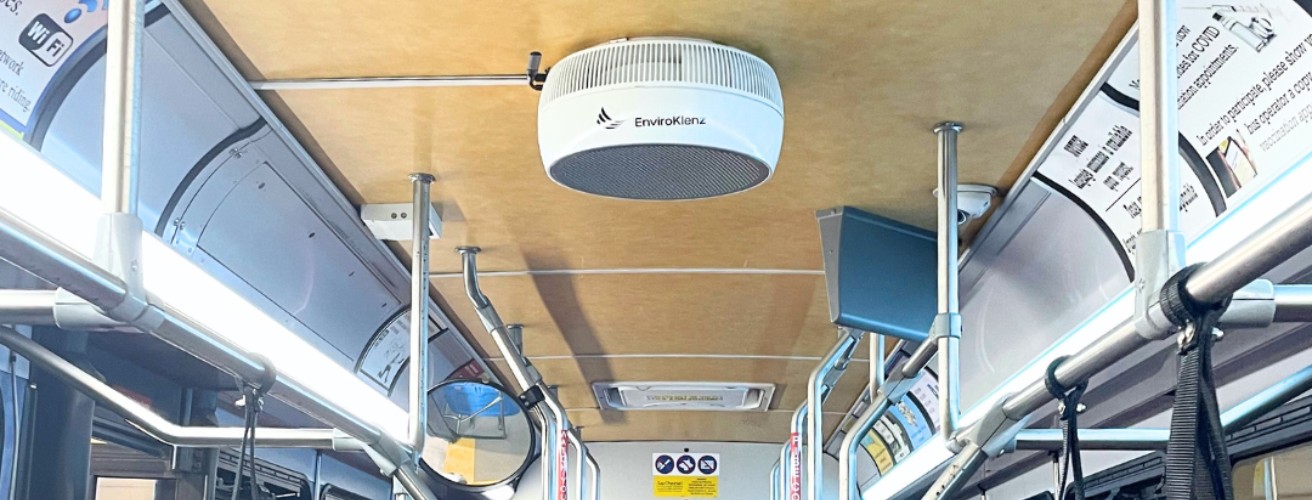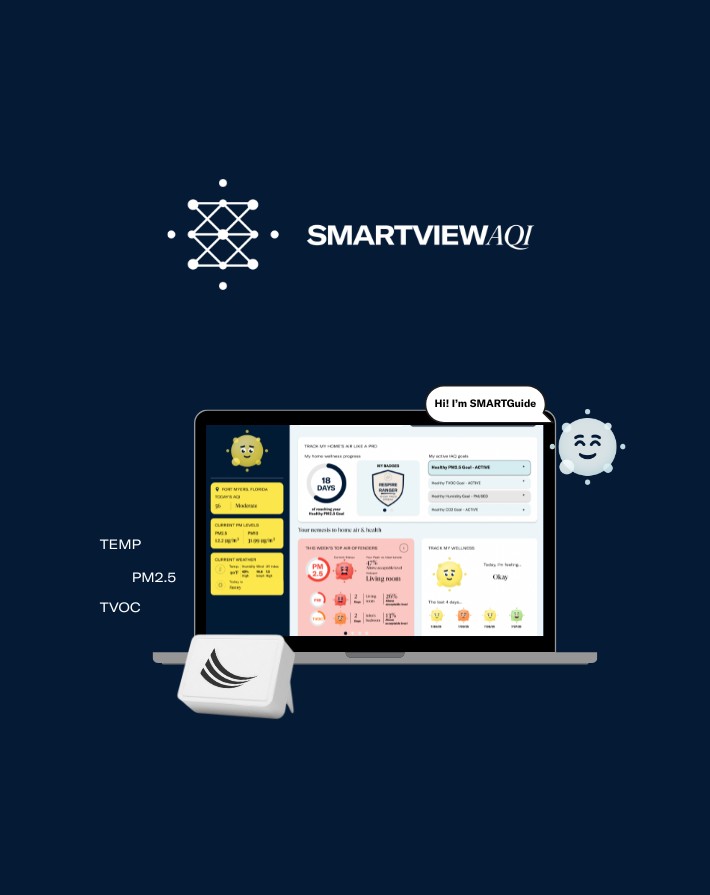Imagine walking into a building that already “knew” where the bad air was gathering — before you did. Not a guess, not a hunch, but a data-backed prediction. The system had already turned up purification in the lobby because it knew the lunch crowd would push CO₂ past comfort levels. It had already neutralized VOC spikes in the restroom before cleaners even capped their spray bottles.
This isn’t science fiction. It’s the emerging reality of AI-powered air quality management, where buildings don’t just breathe — they think. And thanks to advances in platforms like SMARTView AQI paired with EnviroKlenz Smart Mount systems featuring FAST-ACT filtration, facilities can shift from reacting to air problems to predicting them.
The Invisible Threat We All Breathe
EFor decades, we’ve thought of indoor air quality as a reactive game: wait until someone complains about odors, open a window, crank the HVAC. The trouble is, by the time you notice a problem, your body already has.
Indoor air is often a cocktail of:
- Allergens and particulates (PM2.5 and PM1) stirred up by movement and cleaning.
- VOCs released from cleaning agents, paints, or even office furniture.
- CO₂ surges from crowded meetings or shift changes that quietly dull focus and energy.
Opening a window might feel satisfying, but it’s like treating a fever by opening the fridge door — short-lived and ineffective.
The radical shift now underway is predictive IAQ: spotting where and when those buildups will happen before they trigger headaches, fatigue, or absenteeism.
AI’s Crystal Ball: Predicting Pollution Pockets
Think of AI like a meteorologist for your building — only instead of forecasting rain, it forecasts dirty air.
Using data from SMARTView AQI sensors, AI models analyze:
- Building schematics: airflow routes, bottlenecks, and dead zones.
- Occupancy patterns: when people arrive, congregate, or leave.
- HVAC performance: where the system strains, leaks, or over-delivers.
- Surprising factors: sunlight warming one corner of the building, or even how furniture blocks natural air circulation.
The outcome is a dynamic map of “pollution hotspots” that lets facility managers target solutions before problems happen. Instead of blanket over-ventilating (which drives up energy bills), purification becomes surgical and efficient.
From Prediction to Precision: Strategic Air Strikes
When paired with EnviroKlenz Smart Mount units powered by FAST-ACT filters, these insights become action. Smart Mounts don’t just run on an on/off cycle. They adapt, autonomously adjusting based on AI-detected conditions.
It’s the difference between sprinkling an entire lawn when only one patch is dry versus watering exactly where it’s needed. The payoff:
- Cleaner air where people actually breathe.
- Lower costs, since resources aren’t wasted.
- Happier occupants, because the “stuffy room” feeling never arrives in the first place.
This isn’t hypothetical. In a public works facility pilot, SmartView AQI revealed consistent VOC buildup near cleaning storage and stagnant particulates in high-traffic hallways. Once Smart Mounts were activated, TVOCs dropped by more than 30%, particulates by over 40%, and CO₂ by 20%. Those aren’t small wins — they’re measurable health and productivity gains in environments people spend eight hours a day.
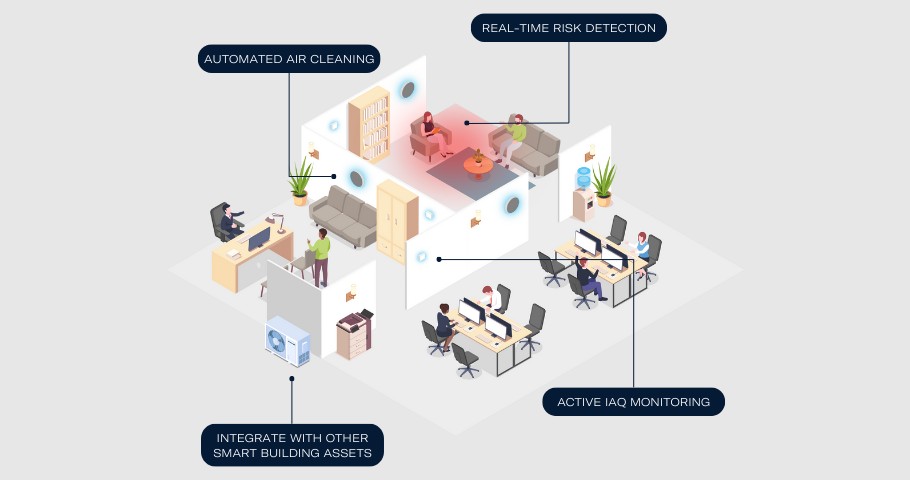
ROI You Can Measure, Not Just Feel
Cleaner air might sound like a luxury — until you see the cost math. Facilities that adopted SMARTView AQI and EnviroKlenz systems discovered that IAQ upgrades pay back faster than most capital projects:
- Utility Savings: Smarter purification and reduced outside air intake saved facilities up to 20% on HVAC energy costs.
- Filter Optimization: AI data revealed that costly MERV 13 filters were over-straining systems with little benefit. By switching to MERV 8 validated by SMARTView data, one university cut $200K annually in operational costs, achieving a 572% ROI over five years.
- HVAC Longevity: Lower strain meant fewer repairs and extended equipment life by 3–5 years.
- Absenteeism Reduction: Cleaner air translated into fewer sick days, which in large facilities adds up to tens of thousands in recovered productivity.
Even in smaller pilots, like restrooms or casinos, results were immediate: TVOCs slashed by 80%+, particulates cut in half, and odor complaints nearly eliminated.
It’s proof of a principle: people may not always buy what’s “right,” but they always buy what they can measure. With SMARTView AQI, air quality isn’t a vague promise. It’s a graph you can show to a boardroom or city council.
A Glimpse of Tomorrow’s Buildings
Picture a hospital where every patient wing is monitored in real time, with AI predicting exactly where VOCs will spike after a round of disinfecting — and neutralizing them before they stress vulnerable lungs.
Or a casino where smoking sections are continuously mapped, with purification directed to the tables that need it most.
Or a public works building where staff never have to think about air — because the system already did, rerouting airflow and ramping purification before CO₂ levels ever cross into “drowsy” territory.
This is the future of indoor air management: self-healing buildings that safeguard health while trimming budgets.
Your Breath, Your Future
Here’s the parable: we once navigated with paper maps, reacting to traffic only after we hit it. Then, the GPS gave us live updates. Now, apps like Waze tell us where traffic will be, rerouting us before we even slow down.
Indoor air is following the same trajectory. We’ve moved from ignoring it → to measuring it → to predicting it. And with tools like SMARTView AQI and EnviroKlenz Smart Mount with FAST-ACT, we can act before bad air derails health, comfort, or budgets.
Because breathing clean air shouldn’t depend on luck or complaints, it should be as predictable — and reliable — as checking tomorrow’s weather.
EnviroKlenz® Medical Disclaimer:
“Any information that is provided on this website is not for the use by any commercial or personal entity without the expressed written consent of the blog author. The material and statements illustrated within this blog are not intended to diagnose, treat, cure, or prevent any diseases or medical conditions. Nor does the author in any way guarantee or validate the validity, totality, or efficacy of any claims and will therefore not be held responsible for the content of any claims. Always consult your medical physician for any specific medical advice or recommendations.”
